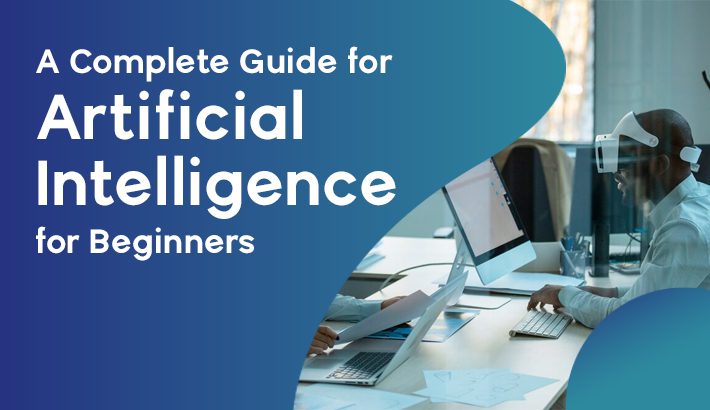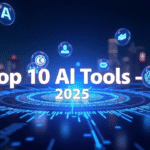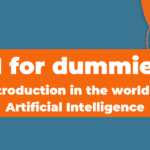What is Artificial Intelligence? A Complete Guide
Introduction to Artificial Intelligence
You’ve probably seen the word “AI” thrown around like candy in an event. What is it exactly? Are they just robots? Do you think it’s just a thing in sci-fi films? Or is it in your life, without even realizing it?
Let’s take it all in the simplest terms: no technical jargon, no tech buzzwords, just a casual human conversation about the nature of AI and why it is important.
The Evolution of AI
Artificial Intelligence isn’t brand new. The concept dates back to the myths of ancient mechanical creatures. However, in actuality, AI as we know was first introduced during the 50s. Since the time, it’s been on an adventure, from clunky rule-based systems, to self-learning chatbots, like ChatGPT ( I’m here, too! ).
Why AI is Buzzing Right Now
Big data, fast internet and the power of computers have brought AI to the forefront of. AI isn’t only in the labs of technology anymore. It’s on your smartphone and your Netflix suggestions, your spam filter, and even cleaning your house!
The Basics – What Exactly Is AI?
At its heart, Artificial Intelligence is the capacity of a machine to imitate human intelligence. This means thinking, learning, solving problems and even understanding the language.
Simple Definition of AI
AI refers to computers performing tasks that require the human brain.
Think: recognition of faces or the translation of languages into cars or beating humans at chess.
The Goal of Artificial Intelligence
The goal? Develop robots which can think and behave just like us, or better. However, don’t fret that we’re not quite at the stage of robot revolution (yet ).
Weak AI vs Strong AI
- Poor AI It’s the majority of the technology we’re using in the present. It’s focused on specific jobs. Your intelligent assistant? It’s weak AI.
- The Strong AI The concept is than human intelligence. It is able to think as well as plan and even feel. We’re trying to figure that out.
Core Components of AI
Machine Learning (ML)
This is the foundation for modern AI. Instead of coding the machine line-by-line we instruct it using examples, just like we teach children.
Natural Language Processing (NLP)
This is how computers understand the human speech. From chatbots to translators, it’s the whole NLP magic.
Computer Vision
It allows machines “see” and understand images and videos. It is used for self-driving cars, facial recognition as well as in diagnosing and treating diseases.
Robotics and Automation
This is the place where AI connects with the real world: robots in factories drones for delivery, your beloved Roomba.
How Does AI Work?
Algorithms and Data
AI relies on data – lots of it. Machines use algorithms to identify patterns, predict and then take action.
Training and Learning Models
Imagine feeding the machine with examples until it can learn. The more it observes and experiences, the better it becomes.
Neural Networks Explained Simply
Based on the human brain Neural networks are an interconnected network of connections which help AI learn from data that is complex. It’s like educating an entire brain to learn from the ground up.
Real-World Applications of AI
AI in Everyday Life
- Google Maps rerouting traffic
- Spotify is creating playlists that you really enjoy
- Siri, Alexa, Google Assistant aid in hands-free
AI in Business and Industry
- Automated customer support
- Predictive analytics
- The detection of fraud in banks
AI in Healthcare
- AI-powered scans detect cancer earlier
- Chatbots assist patients with questions
- Personalized medicine
AI in Entertainment and Media
- Netflix suggestion which actually are logical
- AI-generated art and music
- Deepfakes (both awesome and terrifying)
Benefits of Artificial Intelligence
Increased Efficiency and Speed
AI isn’t asleep it doesn’t lose interest, and it doesn’t make mistakes. It performs fast and efficiently throughout the day.
Cost Reduction
AI can automate repetitive tasks, saving companies money while allowing humans to be more creative.
Solving Complex Problems
From predicting climate shifts to discovering new planets, AI can help humans solve the most difficult puzzles.
Risks and Challenges of AI
Job Displacement
Sure, AI is replacing some jobs. It’s creating new ones too. The problem is how to change.
Ethical Concerns
Should AI take decisions in police work? When it comes to hiring? In war? We have tough questions that we must answer.
Bias in AI Systems
AI is able to acquire human bias from data. This means that it could take ill-informed or even dangerous decisions. Yikes.
The Future of AI
What’s Coming Next?
AI is growing at a rapid pace, faster than we’d ever imagined. You can expect smarter AI assistants and better automation and AI embedded into just about everything.
The Possibility of General AI
One day, we’ll develop machines that are able to behave just like us and in each way. But we’re far from there yet.
Human-AI Collaboration
The ultimate goal? AI is a possible partner not a competitor. Aiding us to work better, live more, and tackling issues by working together.
Beginning to Learn About AI
Can You Learn AI Without Coding?
Absolutely! Tools such as ChatGPT, RunwayML, and no-code platforms make it extremely user-friendly for beginners.
Best Resources to Learn AI in 2025
- Coursera, Udemy, and EdX courses
- YouTube channels such as Two Minute Papers
- Hands-on tools such as Teachable Machine
Conclusion
Artificial Intelligence isn’t a mere technological fad. It’s already transforming how we live and work as well as how we think. If you’re a bit sceptical, curious or totally addicted, one thing is for certain Artificial Intelligence is here to stay and is just becoming more intelligent.
The most appealing aspect? It doesn’t require an expert in tech to comprehend or utilize it. Therefore, go on, investigate the possibilities, ask questions and perhaps even design an own AI tool. The future isn’t just coming, it’s already there.
FAQs
1. Is AI dangerous?
AI isn’t necessarily dangerous on its own however the way we utilize it could be. A responsible development process is essential.
2. Can AI replace me?
It may replace certain jobs However, it can create new opportunities. The trick is growing and improving.
3. Are there ways for AI behave like humans?
But not yet! The majority of AI is task-specific, and doesn’t have the same understanding of context that humans do.
4. Are AI the same as machine-learning?
It’s not exactly. Machine learning is an kind of AI, one of the most well-known however it is not the only one.
5. Do I have the ability to create my own AI application?
Yes! With the appropriate tools and a little amount of knowledge you can get started creating AI apps by 2025.




